#the battle and rpg mechanics are excellent
Text
Me before yesterday: I’m really excited for the TTYD remake, I’ve always wanted to play it, but I’m honestly worried all of these people hyping it up as the greatest game ever are really overrating it. I mean, it’s just a Mario game, how good can it really be?
Me last night after having such a good time I played the game for nine hours straight:
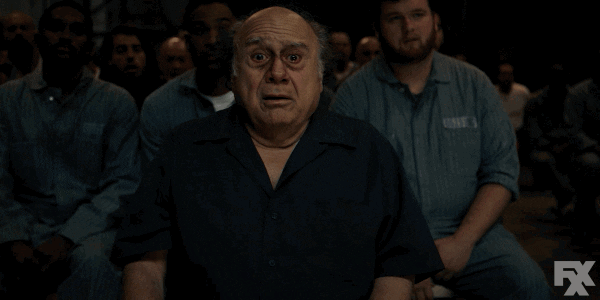
#it’s fucking peak y’all#the writing is so good#the characters are amazing#the battle and rpg mechanics are excellent#I love it#paper mario#paper mario ttyd
1K notes
·
View notes
Text
Ok no one ever talks about Atelier Games in this Website so I'm gonna drop my unscheduled unplanned unscripted ramblings and screenshots about the Yumia trailer:
Short Version: Yumia seems to be Very different from every prior Atelier Game, going towards a more Actiony, Traditional RPG and Linear Story Driven focus than even the Iris Series and Ryza, alongside maybe doing so to gameplay elements too. However, the vibes and themes are Excellent, so although this will likely be inevitably a controversial (and potentially newbie boom inducing) title, I'm ready to love it.
Trailer Screenshot rambling under read more

YGGDRASIL, THE WORLD TREE! That's how you know it's a Traditional RPG (disclaimer: this tree has no name or given story relevancy yet, I'm joking around).

We get to see some movement and world design moments alongside the initial narration, and in this regard, Yumia fully follows in the footsteps of Ryza 3, but More. Zipline segments from there are back, and I wouldn't be surprised if Yumia was Fully open world 90% after Ryza got about 85% of the way to being an open-world game.

We get a sneak peek of the verse's Alchemy System here! We can't really say much about it: the Alchemy Core may just be an item a la the supplements of games past or a full game mechanic. If the latter, my immediate thought is that it would be again following up on Ryza 3, this time the key system, maybe on reverse, even: if they keys were an optional feature on the end of synthesis, the core could be the mandatory first step affecting Synthesis Results. We have to wait to get more info, but it's fun to think of.


Here we have the part I feel has the most potential for controversy: Battle System. Very early on, we see Yumia shoot down a fox? Cow? Foxcow hybrid? With a crossbow in real time. No UI Elements were shown in the rest of the trailer, leaving us the question: after Ryza swapped the traditional turn base for ATB, is Yumia going to change it to Real Time Action RPG?
I actually don't think we can say for sure. Again, no UI Elements means that the ambiguous identity animal could just be a non hostile mob you can kill for materials, while actual enemies are fought in turns/ATB. I don't mind which one they go with (Atelier's cousin, Tales, shows Namco does great ARPG), but one way or another, I am GREATLY looking forward to seeing the Turn Based RPG Discourse join the already lovely Bad Takes On Atelier Landscape!
With those rambles on gameplay out of the way, let's talk about the OTHER very different element: the plot.


DWAGON! Always an important Atelier Staple!
Someone get Vayne in here.
If we are to understand these screenshots as happening in chronological order, Yumia already starts the game in a commander position of a village that is preparing against something, and is promptly wiped off the face of the map. Even the most story/drama heavy Atelier games (that I played) (I'll get to you someday, Iris series) kept a generally light hearted and war crimes free atmosphere. We still don't know how it will work out in game, but it is already a very big tone shift.

This part with the wolf man enemy stands ou too for Yumia's capacity as an action protagonist. I'd say this is the most unambiguous show of strength a series character has shown. like yes, Ryza is described as a capable fighter from Ryza 2 onwards, Vayne clearly knows how to fight, but most of their actions are gameplay land. Ryza 2 ALSO leaves it clear that, story wise, Lent is the group's Actual Trained Powerhouse Fighter.
In contrast, both story and gameplay parts of the trailer leave it clear Yumia is physically capable of holding her own, another evidence of how the game is set to be tonally different from predecessors, doubly so as you realize Yumia has no companions with her on this trailer. I even to get to wonder if she'll make her journey fully solo, which would be something COMPLETELY new for the series.
But what is similar?


This part of the trailer, alongside the title's focus on memories, gave me wonderful Ayesha and Ryza 2 memories, my favorite games in the series.
Both Ayesha and Ryza 2 put a big focus on ruins and the memories of yesteryear they hold. Ayesha is set in a dying world filled with buildings left behind by those who killed it. Ryza 2 has you scouring each and every inch of the ruins in search of the memories of people who lived there, their lives, their stories, how they connected to each other.
Yumia seems like it will be focused on that: holding on to the memories that others have entrusted to you, and using them to find what if your right future, your envisioned land. Truth and Ideals, in a way.
Yumia is going to do a lot of things likely radically different. But I'm sure it will keep the core parts right: the alchemy, the light, slice-of-life elements amidst the action, the somber, atmospheric ambience of Dusk and much, much of what the Ryza Trilogy constructed.
And I can't wait to see more.
20 notes
·
View notes
Note
What are some good new RPG maker games?
I played some ages ago, but the websites have now all been nuked because they were full of ripped assets from SNES games.
ooh i can answer this
for ones with no real combat that've been around for a while, yume nikki is good, but i've mainly played .Flow, a fangame of it, which has a darker tone and atmosphere with more understandable "goals", so i attached to it much more
Ib (eye, bee, as letters) is an interesting art game that appeals to emo/scene aesthetics that i like more, it has no combat but many puzzles and an incredibly interesting setting, to me
OFF is a french-translated RPG which is kinda the best in the business, the art & music are top notch and the gameplay is accessible, if seeing pictures of it or hearing music from it intrigues you, i think everyone should give it a shot.
almost all of these are real battle sprites. you play as a baseball player (The Batter) and purify ghosts as you come into existence. the fandom came & went in 2012-2014 or so, but the game's worth experiencing, very much. more games under the cut below the image

LISA: The Painful is an excellent game that has a post-apocalyptic setting and a weird axis/style for an rpgmaker game (being a sidescroller), the setting involves you playing as a very traumatized man living in a world where all women have gone extinct and people are fighting over nothing before the world ends, the feeling of it is pretty immaculate and the soundtrack is great but strange, it cultivated my interests at a developmental period
most of the aes can be described through this trailer
youtube
LISA also has a sequel (The Joyful) which takes place after the first to tie up the story, but most importantly is that the very interesting setting & vibe set up a slew of fangames, the strongest to start out with which are
LISA: The Pointless, where you play as a very washed up martial artist who gets dug out of a trash pile by a new friend he made; a gunslinger with a bolt-action pistol that only has one bullet, and thus he can never shoot it: only threaten enemies & fake out the fact that he MIGHT shoot them, to debuff them - this game also tightens up the RPG aspects of LISA significantly, and has an IMMACULATE vibe & unique feel, it's one of the most important games to me ever
and LISA: The Hopeful, which retains more of the aesthetic of the original as well as the goofy charm while telling a very compelling grounded story.
i also contractually need to mention Fear & Hunger, it's incredibly unfair and by most metrics fails at game design but if you're interested in body horror, cosmic horror & can stomach depicted (but very much so not portrayed positively) sexual violence, it's very good art
and finally, Hylics is an incredibly artsy game that's obtuse and strange but very beautiful. it's entirely sculpted and animated with clay, but i think (as someone interested in other claymation projects, but weaned off of them after a while) the aesthetic is notably better for hylics, it doesn't feel "gross" with its humor or too, "self-referential" i'd call it maybe?
the sequel, Hylics 2, is instead fully *animated* claymation that was then ported to blender, frame by frame. there's no other project on earth that really looks like Hylics 2.
youtube
i would highly recommend playing both if you gel with them at all or think they look cool, they're both pretty cheap on steam and are accessible for an RPG (if you can figure out its silly namings and mechanic equivalents for things like health & levelling up).
none of the games mentioned here have level grinding or random encounters, either (besides some parts of OFF)! i hate that! i only like good ones, i promise!
that's all, hope this helps lol
#rpgs#rpg maker#rpgmaker#hylics#off game#off#hylics 2#fear & hunger#game recommendations#lisa#lisa: the painful#lisa: the pointless#ib#.flow#.flow (game)
94 notes
·
View notes
Note
14 and 15 for isat ask game
14- favorite character portrait(s)?
here's another set of faves!





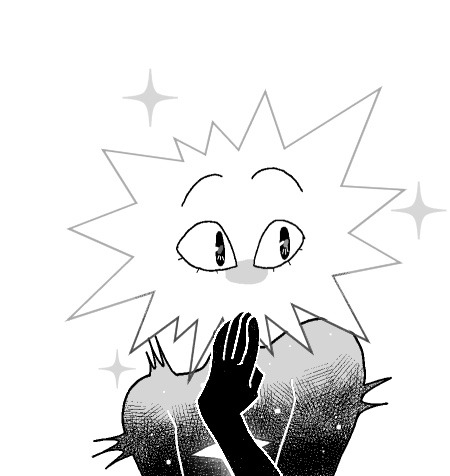
now it's everyone else's turn to be distressed, lol. mirabelle's tears are so well done, she's a very pretty crier... very healer-hero of her. and odile is so deadpan that it's excellent when a big emotion breaks through!
15- anything you’d change about the game? be it game mechanics, a new feature, a change in plot, etc
I'd make it a little harder! I never died in battle outside of the impossible king fights, don't think I ever even got close to it. And the rock paper scissors mechanics were super cute, but aside from that novelty, the battle gameplay was boring and grindy from the get-go.
I think if the fights were more difficult at first, it only woulda contributed to the overall arc of "whew good thing sif can loop" to "wow sif sure is getting stronger, that's helpful for getting through all these fights" to "oh my god i am so sick of these easy boring battles this is hell". it just doesn't hit the same when they're easy-boring from the very first loop!
i guess i don't know how universal my experience is though, and maybe other people didn't find them quite so terribly easy? in which case, perhaps just add a hard mode. i'm no professional rpg balancer but even if enemies just did twice as much damage i woulda had to actually start thinking about defense and healing instead of "eh, either the next jackpot will heal them or the battle will end".
#i think of myself as not being good at video games bc#A. i don't play very many of them#B. my family of origin are all very good at video games#but i do fairly decent at smash vs anyone other than my brothers#and i've hit profresh 600 in salmon run#so idk. maybe i am good at them sometimes? shrug#ask meme answers#isat
12 notes
·
View notes
Note
Have you played the other paper mario games and if so what are your thoughts
I have! The original trifecta are among my absolute favorite games, so lemme go ahead and put my thoughts under a readmore before this gets ramble-y:
To start, the original Paper Mario is an incredibly charming and very user-friendly game. Being the first game in the sub-series, it tends to veer a little too much into holding the player's hand and the battle system is pretty simple, but it's still a great game. Got a cast of some adorable characters, some very memorable (if not especially difficult) bosses, and codified a lot of elements that would be expanded upon greatly in future installments. And I absolutely adore the storybook-style trappings they gave it, and I think it would benefit a lot from a remake a la the arts-and-crafts style of Kirby's Epic Yarn or those Yoshi games with the craft aesthetics. Maybe someday!
I know technically this was a question about the other Paper Mario games, but sorry, I have to gush about The Thousand-Year Door. I love that game! I love it to pieces! They took a look at all the mechanics and story elements they introduced in the first game and improved on every single one!! Battles are dynamic and much more difficult! The plot is much more involved and the writing THRIVES on a whole game stuffed full of memorable characters! Bosses are bigger and more menacing! The jokes are better! Locales are much more diverse, and every chapter gets an interesting little sub-arc to really help tie things together! It really is hard to overstate how HUGE of a step forward TTYD was, and still is! I could go on about it all day but one aspect that I especially love is presenting the battles as stage plays in front of an audience. It helps justify how the player is able to recover energy for special moves (which, hey, is also slight foreshadowing for a plot beat in the eleventh hour! now THAT'S some good integration of plot and gameplay!) but it ALSO makes for much more dynamic fights, with curveballs like props falling on combatants, audience members tossing you items both good and bad (somewhat literal curveballs!), and even showstopping moments where bosses will actually tamper with your audience to get an edge! It's a really phenomenal part of what's already an excellent game. One of my all-time favorites, if not the favorite.
Also, I think Goombella is cute. Sue me.
Super Paper Mario is the oddball, without a doubt. It's generally a platformer, but with RPG elements and the occasional gameplay switcheroo to help keep things fresh. This does help keep the action moving, but surprisingly, SPM has an even more involved plot than its genuine RPG predecessors, meaning that even at the time of release it caught flak for its somewhat uneven gameplay. That said, SPM is a wonderful game. The increased focus on plot makes it perhaps the most tightly-woven narrative of the three, and themes of love and death run throughout the game, explored in many different contexts. Not to give it too much credit, but it's one of the very few games to make me flat-out cry. It also gives Luigi a starring role, which after two games of him more-or-less relegated to cameos makes it all the more heartwarming. While I'm still holding out for a remake of the original Paper Mario, I think it's SPM that really deserves it. Count Bleck would absolutely crush it as a tumblr sexyman.
I really wish they made more Paper Mario game, but alas! They knew they'd peaked and left well enough alone. But hey, three excellent games is better than a protracted, agonizing series of sequels clinging on to the husk of a good idea, right?
Right?
#heinousactszx#paper mario#ttyd#super paper mario#I could go on about how the paper series was also great for characterizing peach and bowser and a thousand other things#but this is just an overview of what makes each game so charming!
11 notes
·
View notes
Text
Metaphor: ReFantazio launches in fall 2024
Gematsu Source
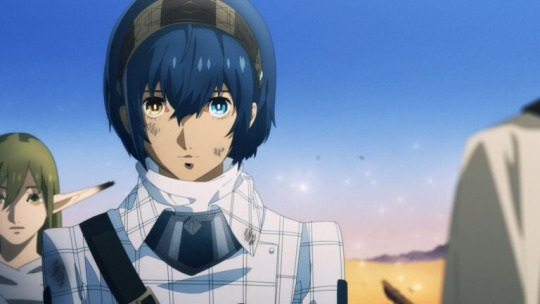
Metaphor: ReFantazio will launch for PlayStation 5, Xbox Series, PlayStation 4, and PC via Steam and Microsoft Store in fall 2024, publisher ATLUS and developer Studio Zero announced.
Get the latest details below.
In the TGA trailer titled, “The Royal Tournament,” ATLUS announced that their highly anticipated fantasy RPG Metaphor: ReFantazio will launch in Fall 2024.
The trailer features new gameplay scenes, an introduction to the story and fantasy setting, and notes members of the team:
Director – Katsura Hashino (Shin Megami Tensei III: Nocturne, Persona 3, Persona 4, Persona 5)
Character Designer – Shigenori Soejima (Persona 3, Persona 4, Persona 5)
Composer – Shoji Meguro (Shin Megami Tensei III: Nocturne, Persona 3, Persona 4, Persona 5)
Concept Artist – Koda Kazuma (Notable Work: NieR:Automata)
Mechanical Designer – Ikuto Yamashita (Notable Work: Neon Genesis Evangelion)
Additionally, ATLUS will host a special YouTube live broadcast in Japan (Japanese language only) for the game on December 11 at 8:30pm JST / 3:30am PST, that will feature guests from the Japanese VA cast including Natsuki Hanae as Protagonist, Sumire Morohoshi as Gallica, Kensho Ono as Strohl, and Saori Hayami as Hulkenberg.
Story
Our story takes place in The United Kingdom of Euchronia, where the assassination of the king brings chaos and unrest to the land.
Then, one fateful day, a magic known only to the king called the Royal Magic is invoked, and the world becomes embroiled in a royal tournament for the throne.
In the midst of this, the protagonist, together with his partner, the fairy Galica, must find a way to break the curse that has been placed on the prince that the kingdom believes to be dead. To do so, they depart on a journey across the vast land.
They will discover that in order to achieve their goal, they must participate in the tournament for the throne, and this great task shall require them to ally with many friends and followers of the various tribes inhabiting the world.
Protagonist
Together with the fairy, Galica, he embarks on a journey to lift the deadly curse placed on his childhood friend, the prince of Euchronia.
He is a boy of the elda tribe, branded as a “”tainted”” people by the state religion who believe they have inherited dangerous and heretical magic. Being so rare among the populous, they are detested and discriminated against throughout the kingdom.”
Gallica
Not only a traveling companion, Gallica is the guide who helps the protagonist carry out his mission to save the prince. Although she is too small to participate in battles, her knowledge of magic and ability to sense magla is superior to the protagonist due to her fairy nature. She doesn’t mince words, but she is a reassuring ally on his journey.
Strohl
He is a young man of the clemar tribe who meets the protagonist in the recruitment centre for the State Army. A smart young man with a strong sense of justice, he hails from a noble family. And yet, it seems his circumstances are complicated, as it is rare for a noble to enlist in the army alongside commoners.
Hulkenberg
A knight of the roussainte tribe and former member of the royal family’s Kingsguard who served by the prince’s side. Despite her young age, she excelled in the use of various weaponry, and was assigned to the personal guard of the prince. But when the prince was attacked, she failed to protect him and set out to wander, carrying the stigma of this failure in her heart.
Heismay
A former knight of the eugief tribe. He has acute perception compared to most others, due in part to the eugief trait of being sensitive to sound.
With an appearance that differs greatly from other tribes, it’s not uncommon for eugiefs to be discriminated against—and it seems Heismay is no exception, his past his own burden to bear.
New Concept Art
Journey through a vast and magnificent fantasy world. Explore the game alongside an intuitive and beautiful UI that elevates the experience. (Get an exciting sneak peek of the look of Metaphor: ReFantazio with new concept art pieces).
Watch the latest trailer below.
The Royal Tournament Trailer
English
youtube
Japanese
youtube
13 notes
·
View notes
Text
THEME: Mechs
This week's game recommendations are all about piloting mechs, for victory, for love, for glory and for money.

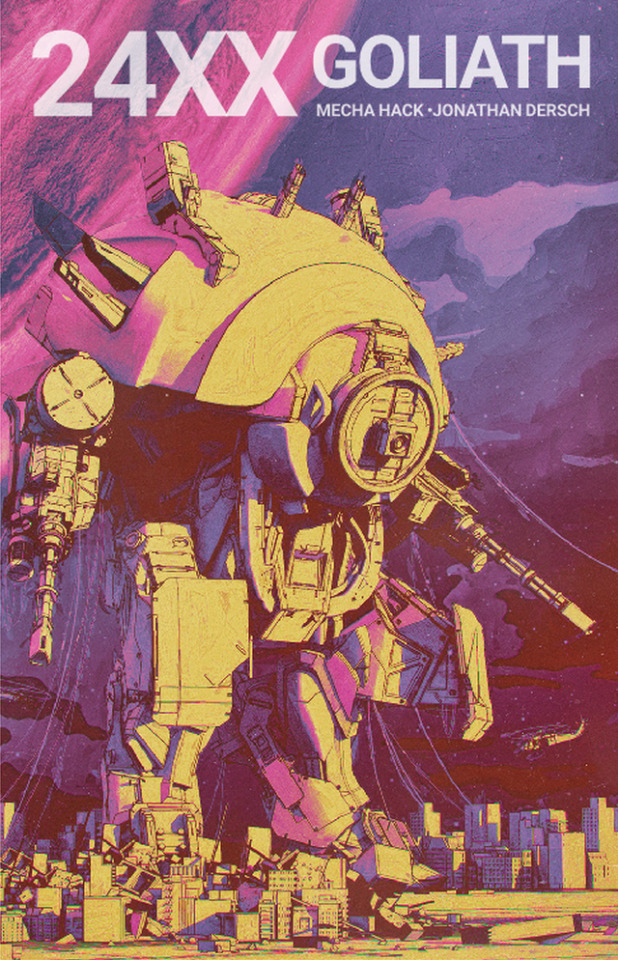



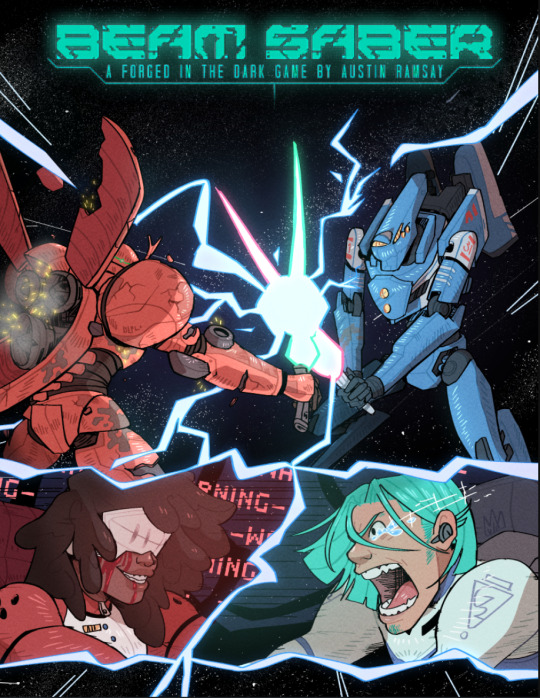

Last Shooting, by My Name is Grant.
Two pilots can change your destiny. Two massive war machines can change your future. Two players can share the happiness.
Last Shooting is a 2-player RPG that uses a unique system to tell stories about Mech battles. Using a customized version of the Final Bid engine, Last Shooting builds the characters and defines them more sharply during each scene of play. Then, it gives you the power to destroy any of those aspects to propel yourself to victory.
This game is excellent for a one-shot session with one other friend. The game uses a bidding system that requires you to bid elements of your character sheet for a chance to win in each scene, and the game is over after three scenes. It's great for couples looking to roleplay together, or perhaps for that night where most of the group cancels, but you still want to play something.
24XX Goliath by Brick Road Games.
24 YEARS AGO OTHERWORLDLY INVADERS DEVASTATED THE PLANET. To defend ourselves from the monstrous Leviathan, experimental technology was used to create massive mecha called Goliaths. Since the war ended most Goliaths were re-purposed for civilian use. Now, the Leviathans have returned, stronger than before. Pilots from all walks of life are being drafted to fight back.
This is your standard 24XX micro-game, complete with roll tables and quick character generation. This game was inspired by Pacific Rim, Neon Genesis Evangelion, and the Xeno series, so if you are looking to emulate those pieces of media, this might be the fit for you.
ECH0 by Role over Play Dead.
Peace. Kids playing in mech wreckage. A ghost.
One last journey across an ancient battleground to find a pilot's final resting place.
ECH0 is a game for 3 or more players, about children escorting a mech pilot's ghost to their final resting place. This is a pick-up-and-play game, which means that it requires very little prep and is over after one session. It is a GM-less map-drawing game, and is perfect as a game on its own, but might also work as an interesting set-up story for a mech-themed campaign. The concept for this game is also great for exploring the idea of grief and loss for something or someone that you never really knew.
Dragon's Fire by Majcher Arcana.
This world is ruined.
Once mighty, shining, and true, the land now festers, ruined by agents of chaos and corruption. The Bastion is mankind’s final refuge, towering at the center of the Five Wastes, sheltering the weak and needy, and fighting to keep the Fallen from breaching its walls, to secure humanity’s future for as long as they hold.
You are Riders, piloting your colossal machines—the Dragons—as you strike at the Fallen Lands, pushing back the hordes that assail the Bastion, delivering aid where it is needed, and eventually piercing the very heart of each of the Five Wastes, so mankind may once again live freely in these lands.
Dragon's Fire is a game designed from the Together We Go toolkit, a game system designed and inspired from OSR-style games. It's meant to be rules-lite, easy-to-learn, with only a few stats to track and improve. Right now it's not a full game, but the core rules have been released for just over $1 USD. If you're a fan of OSR games and you want a chance to play as mechs in a setting inspired by the Dragon's Heaven anime, this might be the game for you!
Mectors by Chubby Crow Games.
After the war, thousands upon thousands of bipedal mechanized fighting vehicles (or “Bimechs”) were left scattered across the land. Many were brought back to the capital cities to be repaired or scrapped, but the majority of them were too damaged to be easily transported. With the war won, the victors simply left their mechanical refuse in the battlefields to rust and wither.
Across the nations, in communities that had lost great numbers of working folk, these Bimechs replaced rudimentary tractors and mining equipment. Nobody knows who was the first to call them “Mectors”, but the name caught on and spread. The war ended over a century ago, and while the world still bears its scars, it has also healed. The capital cities still skirmish from time to time, but those fights rarely extend into the farmlands and mines of the common folk.
In Mectors, players take on the role of a farmer, miner, fisher, carpenter, or some other worker in a labor intensive field. Mector Owners come from all kinds of backgrounds. Some own a Mector that’s been in their family for generations. Others came across theirs recently, through purchase or luck. And a rare few have managed to piece their own together using scraps from decommissioned Mectors, but this is even harder than it sounds. No matter how they got it, they now have a powerful tool with a long history.
This is a game designed off of the Charge System, which takes a lot of cues from Forged in the Dark. The designer already has a few supplements released for the game: a Heartland supplement which can be downloaded for free from the main page, and a Steeper Talent Tree that provides some extra character options. This is a game that allows you to take the idea of mechs and view it through an alternate lens: a high-tech version of "beating your swords into plowshares," if you will. For the concept alone, I think it's worth checking out.
Beam Saber by Austin Ramsey
Centuries after humanity abandoned a rotting Earth, blighted by their follies, the Izyan Conflict's seeds sprouted deep in space as plans unfurled.
The Exodus ships fled humanity’s decaying cradle in varying states of quality and completion. Ships failed, were raided or cannibalized, and jettisoned all but the essentials. History, art, and play all fell in the face of necessity. Those that survived found planets to land on, settle, and fight over across the known regions of space. The evacuation left a vacuum of power, but not for long.
After the Exodus, five Factions rose to power—and thus, The War began.
Beam Saber is a Forged In The Dark game about the pilots of powerful machines in a war that dominates every facet of life. They are trying to do their part, then get out physically and mentally intact. The organizations that perpetuate The War throughout all of known space are too incomprehensibly huge to take down. There is no “winning” The War, there is only surviving it. Hopefully you can help others get out too.
This is a game for folks who like Forged in the Dark games, especially games that manage a large number of factions. Each player has their own Pilot playbook, but they will also need to build a vehicle (possibly more than one if they need a replacement or something temporary). Then they'll build a squad playbook, which like a Crew in Blades in the Dark, is something that the group will build together. This is a game that prioritizes fiction, but doesn't lag behind when it comes to lore; you'll get your role-play, your rules, and your rich history, all in one book. (And even more resources besides!)
Lancer by Massif Press
Lancer imagines a future where a survivor humanity has spread to the stars after weathering terrible ecological collapse on Earth - the end of the Anthropocene as a consequence of unrestrained consumption and poor stewardship. Thousands of years later, humanity lives in the wake of a desperate revolution, one where the victorious radicals now manage the galaxy they've won.
Lancer is truly prolific in what it holds. On the one hand, you have an incredibly streamlined system for narrative role play when you look at pilot creation: your pilot takes four descriptive stats that they'll use to navigate anything and everything they'll interact with outside of their mech. Pilot play is narrative and rules-lite. On the other hand, you have an incredibly stat-heavy and detailed system for mech combat: your mech-driven missions will require grid maps, strategy, and teamwork in order to be successful. It's up to your table how much play is pilot-driven and how much is mech-driven.
Then there's the resources. The core book in the title link has everything you need to run a Lancer game. However, if you're looking for the resources to make a character, there's a free version of the rules, an app where you can keep your character information, and a series of supplements (both official and third-party) to incorporate into your games.
If you like lore, you'll find it in Lancer, but not all in one place. The Core book has a lore section but you'll find lore in the Mech descriptions, in the core bonuses, and in the pilot talents. There's so much to learn about the world of Lancer, and if you're curious enough, you'll find out just how complex this far-flung future truly is.
143 notes
·
View notes
Text
Player's 8-Step Guide to Character Creation and Roleplaying

Being a player in any Tabletop role-playing game (TTRRG) comes with an immediate hurdle: making your character! Choosing your character options and rolling up stats is easy; Deciding on the type of person, attitude, goals, backstory, etc., and how all that will play out when role-playing is more challenging. Coming up with a unique character in which you intend to roleplay, most likely for extended durations, is never easy and can leave one wondering where to start. To help new and old role-playing game players, here is a ten-step guide to help craft your characters into purposeful, meaningful, and enjoyable additions to any campaign!
Step 1: Understand What Kind of Game You Are Playing
An excellent place to start is understanding the game and campaign you are making a character (or Importing an existing one) about!
At the most basic level, understanding and reading up on the TTRPG system you will be playing should be your starting point. It allows you to understand the options to craft your character(s) and grasp how the game will be viewed and played.
For example, Dungeons and Dragons, even in campaigns where combat is less the focus, is constructed with it in mind down to its very bones; every class features extensive combat abilities and utilities (even the most support-focused like Bard or Artificer), and that, naturally, would steer players to design their characters with that expectation in mind: battle.
In contrast, Call of Cthulhu, a horror RPG system based on the HP Lovecraft Mythos, is built around social interaction, research, and the player's insignificance in the face of the unknown. Most player options are more specific and modern, with skills like accounting, psychology, and occultism that point more towards a game of investigation, attempting to outwit, outrun, and outlive the Lovecraftian horrors, with combat only as a last resort.
A character made for one system, like D&D, will, most likely, be very different than a character created in another, like CoC, due to what said systems focus on as a game, one being more combat-focused and the other more roleplaying-focused.
That is not to say a person can’t make a character that goes against or actively breaks the mold of the system present, but intentionality is vital. To intentionally break the rules in a way that works requires a firm understanding of what got broken in the first place. Such as playing a Warlock in D&D with Intelligence as their casting ability instead of Charisma or having Cthulhu Mythos skill points at a starting level in Call of Cthulhu. With all that in mind, establishing a firm grasp of the system you intend to play allows the character(s) you make to have the most options available and provides a better experience of how it fits (or breaks) within the game’s system.
Once you know how to play the game(s), what the Game Master (GM) intends for you in the campaign comes next!
Step 2: Collaborate with Your Game Master and Players
Knowing the system of the game you are playing is the first hurdle; after that, knowing what kind of campaign your Game Master has in mind for you all and how your fellow players intend to interact with it is what you should learn next.
A campaign, in its length, in-house rules, setting, themes, worldbuilding, etc., is as essential to consider when constructing your character as the system rules. Every GM will have varying levels of customized elements for their campaign, no matter how inflexible the game system is. They could use a custom gameplay mechanic, setting, or even rules, so getting a good grasp of those changes and the base game (as discussed earlier) is the recipe for success when making your character at the most foundational level. It also never hurts to allow your GM to give feedback on your character to help fit into the campaign as best you can.
The relationship between GM and player(s) should always be open and receptive to what all parties can get from the games they play together. An excellent way to make that happen is collaborating with the GM during the process of coming up with and creating your character. You can make sure your ideas are both acceptable and fit in with the campaign, but also give your GM feedback on story ideas for your character and try to weave your backstory into the narrative they plan. Whatever a GM decides to help you with during character creation, your working together should ideally enhance your involvement in the campaign with your fellow players. Players whom you should also work alongside when making your characters.
Your fellow players are undoubtedly in the same boat as you, trying to develop a fun character as best they can, so why not work together? Your mileage will vary on how far you can take potential collaboration: it can be as simple as all mutually choosing unique character options and roles for a more balanced group of PCs or go as far as all to create backstories that feature each other somehow! In any case, working with your fellow players can offer much extra value for your mutual enjoyment of the game!
Naturally, this step works best for a campaign with friends or family who are easy to approach and collaborate with. Plenty of campaigns you might play will be with total strangers, but that should not stop you from trying to understand the GM's expectations (and how to meet them) going in or even trying to bounce an idea or two off a fellow player(s).
Where do you go from here, now that you know the rules and have insights from the GM and fellow Players? It is finally time to roll your character up!
Step 3: Roll Up Your Character!
Past all those rules, collaborations, and planning, it's time to roll up the stats and write down your character's abilities!
When and how you go about this will vary depending on how your GM wants it done. Sometimes, it's okay to roll up your character independently; some prefer to do it in a Session Zero or even a private one-on-one, but you need to roll up your character to play!
It might seem like a know-brainer step that does not require a guide to tell, which is not wrong, but what choices and options you take should be done with seriousness. At its core, it is a game, and you should always pick what you want to play, but it is also the basis of your character.
The stats, skills, powers, etc., you give your character will be the basis on which you interact with the game and express your PC. The following steps will go over not just how to make the best of your choices when you first roll them up but also how to make the best of what you don’t have available to you and when it's best to leave intentional gaps in your character.
The first place to start is to see how your stats and skills can inform how you write and express your character in roleplaying.
Step 4: Play Into Your Strengths, Embrace Your Weaknesses
Most Tabletop roleplaying games come with a collection of statistics, abilities, and skills (be they random or actively decided on), and those choices will make up the foundation of your characters in some way or another, so lean into it during roleplay.
A typical example of character statistics is the classic six RPG attributes: Strength, Dexterity, Constitution, Wisdom, Intelligence, and Charisma, with one or more thrown in depending on the game (if not the names changed around), but these are relatively ubiquitous and easy to translate into your character’s backstory and how they roleplay.
For example, suppose you're playing a Fighter in D&D who leans heavily into physical attributes (Strength, Dexterity, Constitution) but lacks the remaining mental attributes. In that case, you can easily write them and roleplay them as a “brain over brown” dullard with little going on in their heads. The inverse of that example, the stat block could be a Wizard, a scrawny intellectual with a big personality, but could get knocked over by a hamster if they got in a fistfight. These are two examples on the extreme ends of the spectrum, but they represent how you can express yourself by how your character’s stats ended up.
Your stats (and how you play them in roleplaying) also roll into the class/profession/role(s) you pick for your character, be them fantasy classics (wizard, paladin, bard), more modern professions (investigator, artist, athlete), or futuristic roles (starship pilot, mad scientist, cyborg), you can then add your stats into the equation to make something exceptional!
You could make a good-natured musician with little brains but a charismatic presence and strong body, an anti-social investigator with a sharp mind and mean right hook, or a brilliant mad scientist with incredible stage presence but little athletic talent. The statistics and the class you pick go hand in hand, so make something fun with them!
There also exist plenty of systems that don’t use the attributes mentioned above or express them way differently (EX: Slayers, Shadowrun, Cyberpunk Red, etc.), but depending on how the statistics and player options operate, the above advice should still be just as applicable despite the differences.
In short, using the statistics and skills you are best and worst at to their fullest, in conjunction with The type of character role you are playing, is a surefire way to make a unique and fun character!
Of course, when coming up with something “unique,” it never hurts to get inspired, especially from your favorite media!
Step 5: Don’t Be Afraid To Be Inspired
Nothing is 100% original, and you should not place the expectation on yourself that your character(s) have to be either! A crucial part of the creative process is taking what you like most from other art/media and slowly evolving it into something that fits your style, and your characters should also be something like that.
Do you have a favorite protagonist in a fantasy series, like Harry Potter or Geralt of Rivia, that you like and want to try and make your spin on for your character in D&D? Go for it! Make a wizard who is the chosen one of a prophecy from a wizard school or a blood hunter with sorted affairs with sorceresses! Do you want a tragic backstory where your father is secretly the evil enforcer of an evil space empire, like Star Wars? Go for it! It might seem like stealing or unoriginal, but realistically, none of these character ideas or story beats will be 100% replicable and change almost immediately when put into practice. No matter how derivative, these concepts you place upon your character(s) will get filtered through your tastes, roleplaying sensibilities, and the campaign setting, then swiftly morph into something wholly new and, ideally, you as a result!
Inspiration is always the starting point for any great idea. Never feel bad or fake for trying to make something just because it resembles something that came before. You can always do whatever you can to make the details that matter, big and small, something different until it becomes something new.
You do not need to fill in every little detail or use every possible change at the onset; sometimes, it is better to leave some gaps open so you and your character can grow as you play the game.
Step 6: Allow For Improv and Intentionality in Roleplaying
Improv is one of the core elements of all roleplaying games, so lean into it! Any player can relate to having to come up with some stray character detail, quirk, or backstory element on the fly, and, quite frankly, it is something you should aim for when making your character(s).
A roleplaying character is not the same as a main character in a novel; it does not require complete intentionality of actions and a slew of backstories to back that up. What matters most is enough details to make your roleplaying meaningful and engaging in the campaign.
The amount of detail can range from (contradicting what was said above) a long-winded backstory you put countless hours into or half a page of bullet points you fill in the blanks for as you play. It varies from person to person what they feel constitutes a backstory worth using for proper roleplay, and there is no wrong answer, but what matters is the ability to be flexible with it and allow for improvisation. No backstory, no matter how well thought out and intricate, will have covered everything that might come up (EX: You wrote a 30-page backstory for your warrior where his family died and he was drafted to be a child soldier but did not write down what his favorite kind of pastry was when you encounter a baker who asks), and that is okay! Make it up! Live in the moment of roleplaying!! That is exactly how these games are meant to be played and, quite often, allow for organic expansions on the characters, making them even more fun to play!
Conversely, having details thought up for your character that you actively seek to use with intentionality never hurts. A character that is, frankly, just a pile of statistics and items with no backstory that you play with at the whims of what is directly in front of you is not a roleplaying character. That description would be the best fit for an storyless avatar in a video game like World of Warcraft, tacitly involved in an overarching narrative but not truly a participant in a meaningful capacity. Stats are not enough. It takes some measure of personal connection, stakes, and investment in the conflict(s), world, and NPCs to make a roleplaying character something that is both real and active in the campaign.
Circling back to “just write the exact amount of backstory you feel is most comfortable,” at least some elements you can navigate your character would be the play. The backstory elements can be as simple as, for example, when a mad scientist character got their start in their profession, some friends and enemies they have (described in single sentence blurbs), and an assortment of topics they are interested in and have opinions on which they prattle on when prompted. That is not a lot, but it is enough to have some connection to how the campaign unfolds, as the GM, ideally, can either use those details to make the character feel involved in the plot or at least collaborate with you to make it work for how the campaign is unfolding.
Improvisation and intentionality, as it pertains to a Roleplaying character in a TTRPG, is a tightrope walk. You need to keep a good balance on just enough details to make the path more meaningful and structured but enough slack to have fun with it as you move forward.
You are, ultimately, playing someone you want to keep moving forward and have fun with matters most for your character. So, make a character you want to play above all else!
Step 7: Make A Character You Want to Play and Be Played With
In a game, you, shocker, want to play something you enjoy! It is the same for a TTRPG character, in their gameplay elements, story, and how you interact with fellow players and vice versa. You should always be conscious of that fact from the moment you roll up a character to the end of a campaign.
At the most basic level, selecting your character’s classes/professions/skills, whatever the game may allow you to choose, you should go for something you would personally enjoy. You might not know if the choices you made to play with were a good fit, so try to change them if you can! Any good GM will allow some wiggle room to change or even replace your character if given a good enough reason. Do not be afraid to communicate your needs in the gameplay of a TTRPG. The gameplay is half the battle; the story is the next, and you can also have some say.
No matter what sort of system or campaign you are in, you (as your character) still engage with it and should steer things in the direction you enjoy most. It is not uncommon for a campaign to go in a direction or two you might not like, for example, an NPC from your character’s backstory represented in a way you don’t like or NSFW elements becoming more commonplace, and in those instances do not be afraid to speak up! Talk with your GM and fellow players and either make sure the game going forward steers clear of the things you might not have been okay with or at least tone it down to help your overall enjoyment. Roleplaying games are a group activity, and everyone’s thoughts and opinions should have weight when deciding how things play out. A fact that you should also be cognizant of with how you play.
While championing sticking up for what you enjoy and avoiding what you don’t, the above paragraph is not a license to disregard what your fellow players and GM like. Remember, it is a group game, and EVERYONE has a valid voice in the proceedings; ergo, you must consider how you present yourself through your actions. Suppose you are roleplaying or making decisions actively detracting from everyone else's fun or bringing forth elements (like the ones in the previous example). In that case, you should be open to hearing them out and changing your approach to playing, just like how you’d want them to do the same.
In short, TTRPGs are about having fun, and you must do what you can to facilitate that and not hinder your fellow player’s fun in the process.
Step 8: Have Fun!
As we just went over, playing a TTRPG is all about fun, and, for a player, that starts with the character you play. These steps and tricks aim to make creating a player character and roleplaying them much more straightforward and ( ideally) fun by giving you some good tips and tricks to clarify the process.
Conceiving a roleplaying character, one you intend to put your heart and soul into, takes time and effort. It requires a firm grasp of the rules you intend to play and some help from your GM and fellow players. You also need to embrace what you have and make the best of what you don’t, using what you are passionate about to give it life and being sure to behave like you’d want your fellow players to act. All of which, while daunting, can be done after using this guide!
Ideally, by reading this guide, the creation and execution of your roleplaying game characters will be all the more manageable, and your TTRPG experiences will be all the more memorable for it!
3 notes
·
View notes
Text
OC WEEK DAY 5
Weapons and Powers
So... I really like designing combat systems. Specifically, systems for RPGS and SRPGS. Building systems and mechanics, even if I don't plan on fully using them, is one of my favorite parts of designing these types of games.
Dalgari: Thrones of Legend is an SRPG. It's combat system is based heavily on Genealogy of the Holy War and Three Houses. It's fun to design builds and combat.
I went on this tangent to explain why most of the things you'll see/read here are just me explaining his "gameplay", so to speak...
Probably not necessary but WOO COMBAT WOO-

Statistics
Taurn is a strong physical unit focusing on dealing high amounts of burst damage to the enemies around him, and increasing the damage output of his allies
His skills revolve around doing high damage, getting critical hits, sustaining himself on the front lines, and buffing the strength and critical hit rate of his allies. He is an excellent frontline unit who can serve as a sort of off-tank if necessary.
His major weaknesses are his low magical resistance, his mediocre speed, and the weakness to arrows and wind magic he gains when he promotes, as he becomes a flying unit.
Descendant Powers
As a descendant of the great Warmaster, Hjördis, Taurn's physical strength and skill with swords is boosted. At any time they feel is right, a descendant will be able to boost the power of their strikes by invoking the power of their ancestors.
The power and amount of times one can use this power is determined by a brand; a sort of birthmark that appears on the body of those who have the blood of a champion in their veins.
The brand also allows them to wield a special weapon.
Weapons and Fighting Style
Taurn primarily uses swords and axes in battle, and his fighting style ranges from refined and powerful to brutal and aggressive. He could best be described as...a rushdown character in a fighting game... but in an SRPG.
His signature weapon is Moralltach,Sacred Brand of The Warmaster. It's a powerful, blessed longsword that was used to fend off demons and evil, cleaving through them with a divine flame.
When the wielder is wounded or low on health, their attacks pierce through the defenses of a foe. It is a symbol of status for the royal family of Bovent.
#oc week#writblr#writeblr#fantasy#srpg#my ocs#dalgarithronesoflegend#dtol#jugdral inspired#fodlan inspired#ocweek2024
6 notes
·
View notes
Text
[Review] Elden Ring: Shadow of the Erdtree (PS5)

They made Elden Ring 2 and called it a DLC.
Since playing Elden Ring (an instant classic of the dark fantasy hardcore action-RPG genre), my appreciation for it has only grown. I've watched countless lore videos and fun challenge runs that show just how deep it is, and comparing it to previous FromSoft games shows a level of polish that represents a peak for the whole meta-series. I still think the open world and material/crafting system are a bit much, but still. Great game. So I was excited to dive right into its expansion pack as soon as it dropped. A week and more than 50 hours of gameplay later and it's done; wow.
The new adventure is intended for endgame characters, so I took my completed game save in there. The difficulty does indeed continue to ramp from that point, but there's a new character scaling mechanic similar to Sekiro's memories/prayer beads, whereby you can buff your damage and defence by collecting new thingamajigs. There's also cool new weapons in there and they absolutely throw smithing stones at you. I kept my ultra-heavy greatshield but soon swapped out my Rotten Battle Hammer/Serpent Hunter/Straight Sword for the Milady, an example of the new Light Greatsword weapon class. It's got a great balance of reach, power, and speed, plus neat combo attacks where you can rapidly chain multi-hit heavy attacks into fast sweeping light attacks. Other new weapons have fun gimmicks and twists beyond what the base game encompassed, although you pretty much have to upgrade them to the max for them to be viable.

The Land of Shadow is the new setting, a realm sealed off and teeming with bitter and twisted creatures abandoned by the outer world. The story has you following in the footsteps of the lost demigod Miquella, deciding the fates of his followers, and ultimately stopping his quest for godhood. Focusing on this one plotline with a small cast of characters makes for a strong story thread, although there's plenty of side distractions along the way that all flesh out the larger story of the Lands Between. I can't wait for further analysis of the details and connections here.
This shadow realm is an excellent setting, with some stunning new biomes, like the plains full of graves, the finger-sprouting wastelands, or the stormy mountain dominated by dragons. What I most appreciate about this new zone is its density, a tightly overlapping landscape with more memorable setpieces and crafted spaces by area than the base game's world. And this despite the new map being nearly half the size of the original map, which for a DLC is huge! There has clearly been some effort to bridge the gap between the open world bloat and copy-paste filler dungeons, and the intricately designed Legacy Dungeons, and I appreciated the balanced approach here.

As always, the combat encounters are a big highlight, culminating in epic boss fights. There's a lot of variety in enemy design and much of it is brand new, with a lot of care in level design and such to ensure memorable fights. As for the bosses themselves, there's some super cool ideas and a lot of them! The base game has 15 major "remembrance" bosses, and this DLC adds a whole 10 new ones. There were many deaths in my playthrough but I'm proud to say I didn't struggle too much with most of them... until the final boss, which really, really makes you work for it. It's kind of nutty. Playing your cards right with the NPC sidequests lets you bring a couple of summon buddies into the final fight, and I really needed them. As per usual, this quest progression can be obscure and parts can be missed or skipped, so I made use of various guides along the way.
Shadow of the Erdtree complements the base game so well, filling out and expanding on aspects of it perfectly. I also think it improves on design decisions while adding some creative new sparks along the way. Taken on its own, it may be the strongest FromSoft "game" yet, and makes Elden Ring as a whole even better. So yeah, it's good. Now to watch countless more lore deep dives and challenge videos!
2 notes
·
View notes
Text
My Nintendo Direct 6/24 Results
Mario & Luigi: Brothership - I've dreamed of Mario and Luigi being presented like this with polygonal 3d and a dynamic camera since the GameCube era, so its great to see it finally come true. First game in the series since the first one in 2003 not to have some obvious gimmick in terms of how the Mario Brothers are controlled in and out of battle, VERY happy to see that.
Super Mario Party Jamboree - Mario Party Superstars in 2021 was the first Mario Party game I purchased since Mario Party 4, (not counting Mario Party Advance) and this looks like an excellent and fun game. I find the inclusion of two retro maps odd since there isn't a focus on old material like in SuperStars.
Dragon Quest 1 + 2 2D HD Remaster - I never played and DQ games before, and I've been interested in featuring DQ1's NES version on stream so as to explore the earliest era of home console RPGs, so I'm torn as to if I'll play the NES version, or this modern remake.
Stray - It may end up being the least impressive version of the game, but Stray's hyper dense gritty high tech city setting got my attention and I was praying for a Switch version. In any game I play town and city exploration is one of my favorite aspects when towns are featured, so I'll be excited to play this one.
The Legend of Zelda: Echoes of Wisdom - The idea of Zelda exploring Hyrule from a top down perspective hasn't been explored since the CDI game "Zelda's Adventure", so It's great to see Nintendo take a swing at the concept, and do so in a way that is true to the nature of Zelda's depiction as a wise protector of Hyrule, but not a soldier or fighter in the way Link is. It feels like the "echo" system is a developer tool from the development of Link's Awakening's Switch remake that the expanded into something that defines the actual gameplay experience when fleshed out into a game mechanic. As an aside, there was a small amount of backlash against Aonuma accusing him of being sexist for not having the option for a female hero in Breath of the Wild, which was absurd, and I'm glad this proves those people wrong.
Metroid Prime 4 - SEVEN YEARS after it was first announced, we finally have screenshots and gameplay of this title. The announcement of Prime 4 should go down in history as one of the most severely mishandled strategic moves Nintendo ever executed, but the game looks great. I have a copy of Prime Remaster for Switch I've yet to play on stream, we'll see if I get to it before Prime 4 comes out.
Marvel Vs. Capcom Fighting Collection - I think this is the first re-release of these titles since Disney purchased Marvel, and it's amazing to see this happen, as I genuinely doubted if it would be possible. I don't care about these games but I'm glad they're being made available.
Nintendo World Championships: NES Edition - I will totally buy this. I love high score attack runs of Vs. Pinball and I've had the NES Remix games on my list for years. Actual speedrunning and skill challenged condensed into curated mini-game like format is fun, and I'm certainly going to get my hands on this one
Donkey Kong Country Returns HD - Doesn't look graphically impressive even for Switch, but this was one I hoped would come over, and it still looks great. I hope the forced motion controls that made me fall off the Wii version have been revamped. But from my perspective, I haven't even played and covered the first DKC on my show yet, so I'm not likely picking this one up soon.
Only game I specifically hoped for that wasn't featured was the remake/remaster of Beyond Good and Evil, which got an ESRB rating late last year, but has yet to be officially announced for whatever reason.
10/10 show for me. If for the rest of my life I could only play games on Switch, I would never ever be bored, ever.
But I'd still rather play RCA Studio II than most modern stuff anyway.
------------------------------------------
MY LINKS
[🅗Twitch] [🅗TikTok] [🅗VOD Channel] [🅗 FA] [🅗Ko-fi]
4 notes
·
View notes
Text
Game of the Year 2023: Honorable Mentions
It's an honor just to be nominated.
Octopath Traveler II

Octopath Traveler II landed better for me than its predecessor. The visuals are lovely, the soundtrack is awesome again, and the writing is better this time around. I put around 50 hours into this game, and I hit up against a boss fight that took me ~45 minutes to lose. Tried a couple of times and lost the drive to come back. Excellent RPG with some pacing problems and spongey boss fights.
Stray Gods: The Roleplaying Musical

More of a visual novel musical than a roleplaying one, the game's story and aesthetic immediately hooked me. Everything about the game hits except - crucially - the music. I cared about the characters and was invested in the story, and the way you make choices that affect the story and the current song is a really neat hook. The songs just don't have the juice though.
Dredge

In Dredge you play as a fishing boat captain (or, if you prefer, you play as a boat). You go out for the day, make your catch, and come back to port to sell. If you find yourself out at night you might encounter some weird sights and sounds, your light might flicker and die, and the vibes are generally Off. There's a lot of weird shit happening and odd characters sending you out for fishes. It's a wonderfully foreboding world full of mystery and intrigue. It's a game that is somehow chill and disturbing at the same time.
Wildfrost
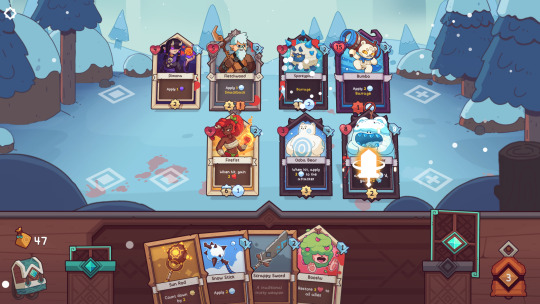
Wildfrost is the best card game I played this year with some neat mechanics and lovely artwork. I had it on my second screen quite a bit. My biggest issue with it is that it's too easy to overlook something and blow the game unless you really pay close attention (a Me Problem). Each character on the screen has its own timer, stats, and text. And that's normally not a problem at all for me, but when your champion dies the game is over. Too many of my plays ended when my champion died unexpectedly. Again, a great card game but not a good passive second screen game.
The Cosmic Wheel Sisterhood

Deckbuilding tarot visual novel game. Writing, music, and overall vibes are just wonderful here. Reminiscent of The Red Strings Club. My only real complaint is that everything surrounding the main conflict of the story is more interesting than the political posturing and campaigning for the new leader of the coven which much of the game centers on.
Sea of Stars

Similar to last year's Chained Echoes, I can tell that there's a really good game here but it just never completely clicked for me. I played quite a bit of it and enjoyed my time with it, but didn't feel compelled to keep coming back.
Lamplighter’s League
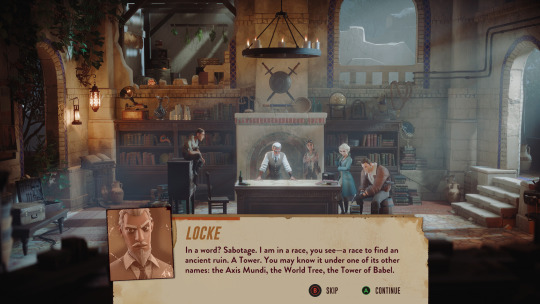
The elevator pitch for this game is XCOM but with an Indiana Jones theme. I somehow managed to enjoy it more than either of its inspirations. It feels a bit like a fancy version of Pathway. It's a little rough around the edges, but I had a blast assembling a team of weirdoes to battle cultists and steal relics.
Fire Emblem Engage

I have to stop playing Fire Emblem games. Like Pokemon, the combat is passable but ultimately disappointing for me. It's too quick, too wham-bam rock-paper-scissors for me. Engage brings back characters from the series' past, which is unfortunately lost on me. I enjoyed the game's visuals and goofy Saturday morning cartoon aesthetics, but the combat never hit for me.
Dave the Diver
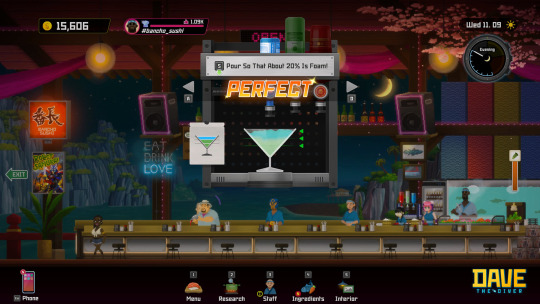
This one was not on my radar at all when it released, but Dave the Diver really impressed me with its writing, visual style and charm, and variety of minigames. The cast of characters and story are great, particularly the sushi restaurant portion of the game. The storyline with the underwater kingdom hurt the pacing for me a bit, but this game is still a banger.
Theatrhythm: Final Bar Line
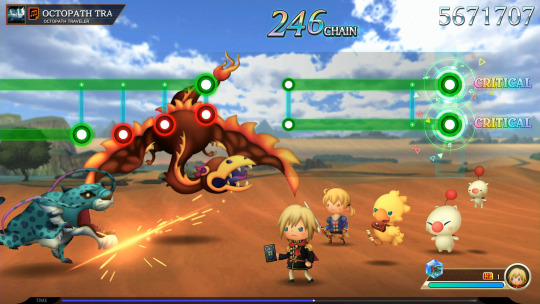
I've never gotten into a rhythm game that didn't involve a plastic instrument before now, but pressing buttons in time to all the Final Fantasy music while little chibi Final Fantasy characters fight little chibi Final Fantasy monsters is somehow very compelling to me. I played this game on and off all year long as a nice way to unwind with a song or twelve.
Dead Space Remake
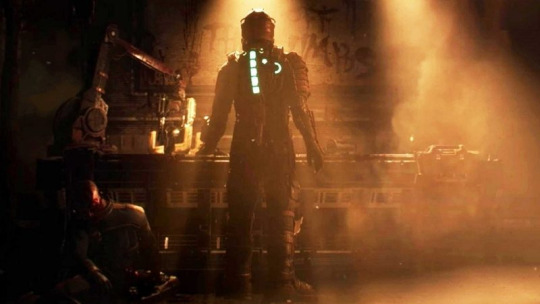
I missed this game the first time around, glad to have caught the remake here. It's been a great year for survival horror games, and Dead Space is a good one. "Alone and terrified on a crashed space station in a part of the universe humanity really shouldn't be" is well-worn territory and for good reason. It's compelling when done well, and Dead Space does it well.
Super Mario Bros Wonder

Time and nostalgia, man. I have no idea how to rank this game or even how to verbalize my thoughts and feelings on it. It's a callback to the games I played growing up. Most sidescrolling platformers these days are metroidvanias, indie titles, or both. Getting a game from Nintendo that feels like a true successor to Super Mario World some thirty years later is wild.
It's not that they haven't done Mario sidescrollers between now and then, it's just that they have felt rote and joyless, like they ticked the boxes and released it. They felt uninspired. Super Mario Bros Wonder is not guilty of that. It is bursting at the seams with life and joy and creativity and (forgive me) wonder. They're not afraid to get weird with it, to introduce new elements and new enemies without going overboard with them. Every new stage is full of potential because you have no idea what they might throw at you.
A lot of this comes from the new Wonder Flower, a powerup you can find somewhere in each level that feels like an acid trip. Warp pipes come to life, the hills bounce, the walls bleed, and you can see sounds and taste colors. The game also adds equippable badges that let you float when you jump, jump straight up when clinging to a wall, swim faster, or any number of things.
Listing off new features doesn't mean much without execution, and it hits on all cylinders here. They've also added a strand element that the player can opt into, where you can see ghost outlines of other players and help them out or get help from them. It's especially useful in finding secrets (Oh, someone's way up there? How do I get up there?). It's a neat take on co-op, akin to getting helpful notes from other players in souls games.
The Nintendo of the past 5 years or so feels confident in a way that had been missing for a long while. Mario Odyssey, Bowser's Fury, Breath of the Wild, Tears of the Kingdom, and now Mario Wonder all feel like they've grown beyond the shackles of their series' past and are bold in a way that's wonderful to see.
Fuga: Melodies of Steel 2

The sequel to one of 2021's best games did not disappoint. It largely brought more of the same: orphans, tragedies of war, furries, and tank on tank battle. I don't see any of those things much, so this was a welcome entry for me this year.
Dordogne

This is a perfect game pass game. An indie title I'd never heard of and doesn't immediately appeal to me, but it's on a service I already pay for so why not? It's about a young woman going back to her recently deceased grandmother's home in France, where she'd spent a summer as a young child.
She is recovering memories and unearthing the source of family trauma - the kind that often bubbles up with the passing of a matriarch. The game really takes its time lingering on small details - every step of making tea in grandma's kitchen, the dusty old photos in the living room, the old train set in the attic. These little details can surprise us with how strongly they hang on. I found myself thinking about the time I spent with my own grandmother (the only grandparent I ever knew). Remembering the worn deck of Authors cards we played with, the way her hands looked as she washed green beans we picked together.
I brought my own experiences to the game, and I think that's the point.
Endless Dungeon

Games don't always have to reinvent the wheel to leave an impression and provide enjoyment. Endless Dungeon was a fun co-op twin stick dungeon crawler that my wife and I played. The moving and shooting felt good and it provided plenty of challenges to overcome together. In a year that didn't include Diablo 4, this might have hit harder for us.
Like a Dragon Ishin
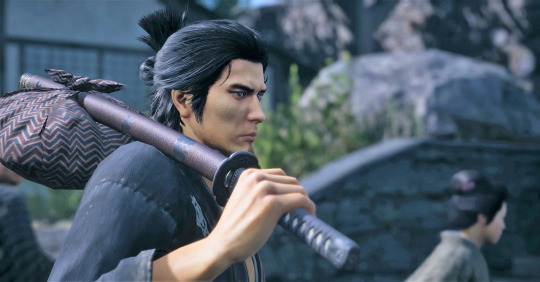
Give me my Yakuza in whichever form you like. Turn-based, real time, Modern day, 80's, feudal Japan, zombies. Fuckin' whatever. I'll clean my plate every time. This one's ending smelled pretty funny from an historical/nationalism point of view, but the rest of the game felt like historical Yakuza tourism and I am here for it.
The Last Spell

This game is an early access success story. I played a lot of it before it went 1.0, and I kept enjoying it after. You're managing a small base that is being invaded by hordes of enemies every night. You control a small band (3-6) of heroes tasked with mowing down wave after wave of monsters, backed up by traps, ballistae, and catapults if you choose to build them.
After the night passes you level up your heroes, build up your little base, outfit your crew with new gear, and do it again. It does one of my favorite things in games: it makes you feel stupidly overpowered then pushes you to your limit. My victories usually end with my town almost in ruins, which is the perfect difficulty. Lastly - and definitely not least -the soundtrack is a prog rock cornucopia.
Final Fantasy XVI
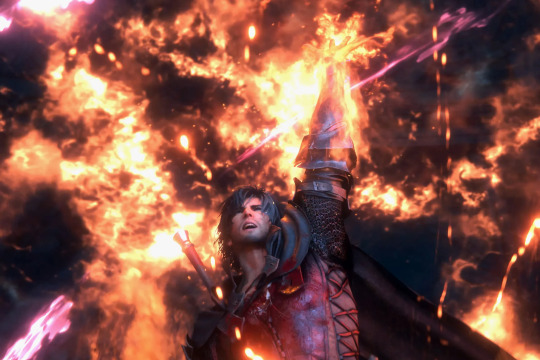
Final Fantasy XVI has been a polarizing release, with some fans put off by the clear Game of Thrones inspiration. The gameplay is 3rd person action where you're only playing as Clive. As someone uninterested in Game of Thrones and not especially precious about the sanctity of the Final Fantasy series, this is a fantastic game.
It does spectacle and bombast in a way no other game did this year. The game revolves around eikons - the game's pantheon of summons like Bahamut, Ifrit, etc - and the battles between them are filled with button mashing and quick time events.
Unfortunately the button mashy combat was hard on my hands because I am old now, and the maybe the PS5 controller is uncomfortable for that? I enjoyed the game every time I picked it and played it, but I didn't find myself drawn back to it frequently.
It's in good company with 90% of 3rd person action games I've played. I had fun with it and didn't finish it.
Resident Evil 4 Remake
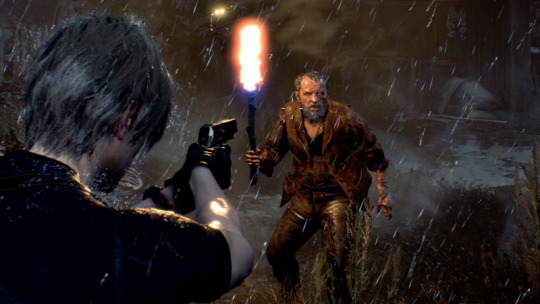
I never played more than an hour of this game before the remake. It follows the path of every Resident Evil game I've ever played, starting off very strong before ending with a sort of wet fart in the back third of the game. That said, it's a great game and I understand the love it gets. That opening section of the game in the village is top tier, and there are some great characters along the way. This probably would be in my top 10, but I don't like lining remakes (even excellent ones) up alongside new releases when it comes time to hand out awards.
Super Mario RPG Remake
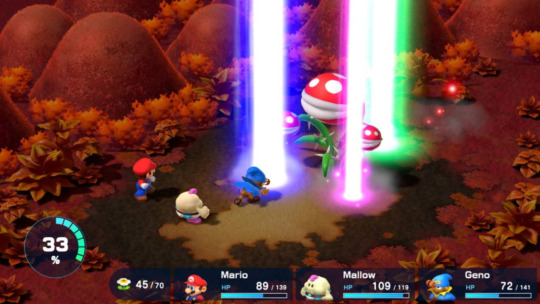
Similar to the RE4 remake, this would be 100% in my top 10 if it was a new title and not a remake. I played this in 1996 when it originally came out. The notion of Square making a Mario RPG was bonkers, and they pulled it off incredibly well. That novelty is gone in 2023 after we've seen Mario in all kinds of genres, but the execution still holds up beautifully.
2 notes
·
View notes
Text

Final Fantasy III Pixel Remaster (PC/Steam Deck)
In contrast to FFII, it's pretty easy to declare this the definitive version of Final Fantasy III, in part because there aren't as many versions of III as the others. FFIII was left out of the PS1 and GBA port jobs Square undertook for the series, and never had any form of English release until the 3D remake on Nintendo DS in the mid-2000s. But even so, the Pixel Remaster reigns supreme for pretty easy reasons: there's no stupid fuckery here.
In both the Famicom original and the DS remake (and, I believe, in the PSP and PC ports of that remake, and the original bad mobile version), swapping jobs required Capacity Points to make the jump, and then for some arbitrary number of battles after the swap your character would be not-insignificantly debuffed. This system is nonsense and contributes nothing to anything, and so the Pixel Remaster dispenses with it entirely. You can swap jobs at any time and be functional immediately.
Also, the DS remake rather infamously was made significantly harder, especially in certain places (like the Garuda fight), which combined poorly with a lot of enemy and area design in FF3 in places (such as the Garuda fight, where you're locked into a city with the only available resources being very expensive Dragoon-only gear for a fight that expects a full or near-full Dragoon party). The killer is in FF3 original and DS, bosses get to attack more than once per turn. Beefing up boss stat numbers, accordingly, makes them way harder, especially the further into the game you go. The Pixel Remaster makes it so bosses can only attack once per turn - and a good thing too, because Cloud of Darkness can and will use Particle Beam 10 times in a row and 2-3 will kill a highly equipped Lv47-50 team without healing.
So with sane difficulty, fully working mechanics and no assaulting you for using them, the PR pretty much gets to walk this one. It even makes further changes and tweaks to a bunch of the jobs, though not all of them are sane - Scholar gets something worth a shit in new ability Alchemy (doubles item potency) but Dark Knights lose their three tiers of White Magic for no good reason - but really, the difficulty and the job system tweaks are enough to take it. Combine it with some truly fucking excellent music remixes here, and the lovely sprite and animation work, and it really is no contest.
I have more waffle under the cut, as before; if you want to play FFIII for academic reasons (it is extremely core and relevant to a whole lot of FFXIV's content, for example), this is the version to get, but on its own terms it's a fine if simplistic RPG, worth a punt on its own merit.
An interesting aspect of the DS remake of III is it made an attempt to make actual characters of your party, giving them distinct appearances and names and one or two character traits. FFIII doesn't have the room for much writing or characterisation (being a Famicom game at the end of the day), but it was a noble effort. The beginning has most of the notable changes; you start with two party members and need to get the others at the early towns before the first proper dungeon, for instance, instead of having all four to start.
There's a bunch of other little details that stand out, like giving the Crystals colours to match their elements rather than all of the Crystals of Light being uniform blue (which the PR opts for, as the original did); this makes the fake Earth Crystal in Goldor's manor seem like a genuine loss of the real Earth Crystal because it actually looks golden, whereas in the original and the PR you know it's fake because it's gold, unlike the normal blue ones. The 3D remake also makes the flooded world look distinctly darker, and the water more like actual manifest Darkness than water, which is a good touch.
I don't think these necessarily make it worth playing (without some sort of balancing mod that tones the game down), but they did genuinely try with the 3D remake, in and around making deranged decisions like beefing up individual enemies to account for being able to display fewer of them per fight because of hardware constraints. The PC version on Steam is apparently still fucky, which is a shame; it's based on the PSP version, which as I understand it is mostly a direct lift of the DS one but with some curious tweaks (namely, changing the colours of things like Luneth's hair a bit and other small visual tweaks, mostly). DS and PSP emulators are pretty good these days, especially PSP ones, so if you're dying to see it, that would probably be the best way.
From a series history perspective, a lot more of the iconic elements and imagery of the series become fully locked into place here:
Moogles make their debut, as little furry beings living in the sage Doga's manor. Fat Chocobo also makes his debut, as an item storage mechanic that no longer has real use in the Pixel Remaster, but hey, it's there.
The concepts of Light, Darkness and Balance are instituted fully, building on FF1's rough ideas for Light vs Dark and the use of the Crystals. The idea that Darkness is not intrinsically bad, and Light is capable of ending the world as well, is established at this super early stage, alongside the Warriors of Darkness as heroic figures.
Many of the series' mainstay classes and their associated aesthetics are introduced here. Scholars, Summoners, Sages, Dark Knights, Bards and more take form here; Summoners in particular have their distinctive horn that marks their appearance. The airship Invincible also becomes a thing here.
Dragoons gain their association with spears and their signature Jump ability (think Fly/Dig from Pokémon, basically; it's functionally where Pokémon got it from). Where FFII had Dragoons working alongside dragons as special dragon riders/knights, FFIII has Dragoons as anti-dragon and anti-aerial fighters.
Summons in general are a major part of the series, core to the plots of a whole ton of later entries, and they find their start here. Summoning magic is introduced, and with it debut Ifrit, Shiva, Ramuh, Titan and Odin as summons along with their signature moves, general aesthetics and concepts. Odin has Zantetsuken and is associated with causing instant death even at this stage! Also, Bahamut from FFI and Leviathan from FFII are placed atop the hierarchy (Odin beneath Leviathan, and Leviathan beneath Bahamut in the power rankings), also gaining their general aesthetic and concept and signature moves (Tsunami and good old Megaflare). Odin, Leviathan and Bahamut needing to be specially sought out and fought or obtained in a special way is a recurring concept that starts here, too.
More spells and spell names are put in place by this point, and broadly the general White and Black Magic spell lists take fuller form. Meteor now sits atop the Black Magic spell list alongside Flare, and Tornado makes its debut in White Magic. Arise also makes its top-end White Magic debut, and thank fuck for that, reviving with full HP is a god-send in a game where you can't control aggro/enemy targetting.
FFIII puts all the "last" pieces in place, more or less, setting the stage for FFIV, which is to my mind when Final Fantasy "becomes Final Fantasy", at least as we know it now. The job system serves as a good merge of FFI's adjustable party and FFII's fully customisable character build concepts, giving you on-the-fly freedom (well, in the PR version at least) to shift party make-up as needed. Jobs also determine stat growths, with level-up stat gains favouring the stats your class benefits from without boosting the others as much, which is a much saner approach than FFII actively diminishing stats considered in opposition to the ones being utilised at the moment.
What's interesting is the decision to design parts of the game to push the player toward using specific configurations to solve problems and navigate dungeons. For example, early on, you need to use the Mini and Toad spells to enter dungeons or bypass specific obstacles, which mandates having a White Mage (or a Red Mage) with those spells. This encourages you to always have a healer for the convenience, which you'd likely be doing anyway. The mechanics of Mini make you take a lot more physical damage if you're in the front row, and do minimal physical damage with attacks; magic is unaffected, and there are multiple areas where you have to stay Mini for a while, pushing you to use an all-magic party.
It's a layer of design consideration and mechanic utilisation the first two games never quite reached, and it's really rad seeing the ambitions and ideas gradually grow as the staff become used to making RPGs, making these games and grow into their styles. Again, the roots of FFIV and the series' identity taking form shine through.
It's not always great; the Pixel Remaster's changes make getting a four-Dragoon party to wipe Garuda much easier and cheaper than other versions, at least, making that section a simple affair, but despite the devs' best efforts to improve the class, Scholar is still a really bad class. Its abilities are useless outside of the one boss fight you're forced to use it for (the boss uses an ability to change its weaknesses and resistances, you use Scholar's ability to identify the current ones). I mean, fuck, that boss has a harder recolour in the endgame optional dungeon Eureka, and if you have Libra (Lv4 White Magic) on someone you don't need a Scholar as it does the same job. I'm pretty sure you can get Libra before the boss that mandates a Scholar if you explore optional towns first, and if you have a person start as a White Mage and never change (easy to do, as you'll need Mini and Toad well before then), you'll have enough job-levels (separate from character level) to have enough Lv4 MP to do the fight without a Scholar.
An obvious solution is to let Scholar use White or Black Magic, or give it the same (or a similar) spread as Red Mage so it has something to contribute when it's not scanning that one boss' weaknesses. Make it a halfway point upgrade for spellcasters, as outside of swapping a Black Mage out for an Evoker (proto-Summoner before you get the real thing) there's basically no upgrade or replacing White and Black Mages until the final crystal spits out Devout and Magus...at the start of the final dungeon run.
They really should've given crystal #4 sooner than the first section of the final dungeon run.
On that note, I'm something of a sicko so my only real problem with FFIII's legendary insane final dungeon run is the lack of a mid-point save and restore point. The restoration aspect is catered for by most of the chests in the PR version dispensing Elixirs (I assume the original FC version does the same, don't remember if the remake did), but it does need a proper save point. The Pixel Remaster lets you save on the overworld between the first portion and the rest, and if there's another save point I missed it.
But like, the Ancient Labyrinth -> Eureka -> Crystal Tower -> World of Darkness run is genuinely kind of rad, killing lots of high-end bosses, pillaging the best weapons, Lv8 spells and even two extra super-jobs from Eureka (it's an optional sub-dungeon, but so worth it) and then ripping through more bosses, it's the kind of meaty RPG murder run I really quite enjoy. There is a point where this sort of thing can be done wrong by going too far, and it's somewhere between this and the fucking maniacal gigantic boss-rush final dungeon in FFIV: The After Years.
FFIII is in an interesting place in the series; it's apparently super popular in Japan, regularly placing high in fan favourite polls, but it never got the ports the others did and never left Japan for decades. In spite of that, it's an extremely influential game; FFV continues its Job system notably, but FFXIV cribs from it extensively, to mad degrees. It's the game XIV cribs from the most after FFXII and the other Ivalice games, the ARR Alliance Raid series is just the Labyrinth->Eureka->Crystal Tower->World of Darkness run directly with all the same ideas, FFXIV Shadowbringers explores the concept of "Dark is not Evil" and the Warrior of Darkness idea very directly in III's vein (III music remixes are rife in Shadowbringers, they aren't hiding it), and more.
Also, from the DS remake of III we eventually follow the path to 4 Warriors of Light, an original DS game emulating the constraints of RPGs from III's time to make a new experience. Its delightful art style prompted some mimics in things like Legend of Legacy (which is getting a remaster of its HD port soon, I never did play that one), but more critically led directly to Bravely Default.
It's just interesting to think about this one specifically being so influential, but then, it's not hard to see why. The reveal that the initial world map is just a small floating continent in the corner of the world, now floating above a world buried beneath a dark ocean, a world of people held in stasis by the encroach of Darkness, that's some wild shit to be pulling in a Famicom RPG. But then, Final Fantasy always was one for bombast: the first game reveals it's a time loop plot and the second game has its villain literally overthrow Satan and commandeer Hell after being killed the first time.
Like, the early Dragon Quests are good games and all in their own right, they earned their fame and fortune, but they really don't step, do they?
2 notes
·
View notes
Text
When Players Commit to the Bit
My last post talked a little about player buy-in, and its impact. Again, as far as game design goes, my experience is limited to personal experience playing games and the experience I have as a Game Master for tabletop RPGs, but especially in those varieties of fiction, player buy-in matters. I'm going to address two particular games where this made all the difference.
To start with a group of players that has really knocked my socks off, I'll tell this first story from the players' perspective, as I was one in this rare occurrence. Any D&D5e veteran knows that the system was built for medieval power fantasy; the existence of the spell fireball is enough justification on its own, but should you need a few additional examples from a DM's perspective:
The 1st-level spell heroism completely negates the frightened condition, regardless of its source, and is available to any divine caster at 1st level. At higher levels this is the solution to fear effects from creatures like dragons, who often have DCs that creatures lacking the appropriate save proficiency could never succeed on.
The game itself has a terrible exploration and social interaction system, just look at the memes. There's a reason the homebrew community is so strong when it comes to additional or revamped mechanics.
The game also has a terrible inability to run Battle of Helm's Deep-esque situations because it is precariously balanced in the system of action economy - assuming that players will always be up against enemy groups of similar size and strength to their own.
This problem is further exhausted when specific genres, like horror or survival, come up. That's because, again, the game is balanced in the player's favor by default. Nothing should be scary until it is a definite loss for the party. Not to mention numerous background features and low-level spells immediately negate the concern of finding food, water, or medicine - as well as treating diseases and poisons.
So, dear reader, you may find it interesting when I say that my favorite experience as a player was in a modified version of the Curse of Strahd module. Curse of Strahd is a survival and gothic horror module that was heavily influenced by Bram Stoker's Dracula, for those unfamiliar. As I've already stated, the system of D&D5e is not well-suited to these types of challenges without using tactics that severely cripple players and their abilities. However, in a combination of excellence on the Game Master's part and the buy-in of all of the players, this game has been one hell of an experience.
Not only did every player come to the table with a self-motivated and layered, perhaps even somewhat corrupted, motivation - but those motives and characters have been well-played by the players in response to the appropriate types and levels of pressure applied by the DM, both on the characters in fiction but also on the players at the table. Every session ends in a cliffhanger, which only helps preserve the mindset from week to week of being in the game.
We also are tolerant, as a group, to making less-than-ideal decisions. Our characters may flee, even if nothing mechanically compels them to do so. They may make hasty decisions, or even evil things, and the characters themselves may create and relieve tensions throughout the group. Curse of Strahd has become gothic horror done right in D&D with this group because we as players let ourselves be afraid, be invested in our character's survival, and follow a narrative that is always changing and reacting.
Not quite in contrast, but certainly from another angle, I have had my best experiences and pride in my work as a DM when my players truly invest themselves in the world and connect with it. In my most recent, and possibly last ever, 5e campaign I had built a world that was embroiled in a continental war, specifically over the use of magic. At the outset of the game, I informed my players that this conflict had gone on for quite a long time, with many tenuous peace treaties over the decades, so the nation of origin for these characters would vastly influence how they perceived the world, due to various levels of propaganda, so they would have to choose together what nation they were loyal to, though that loyalty could change over the course of the campaign. The final composition of the party was a cloistered cleric, who would have had little opinion were it not for a raid on their church; a soldier, who deserted after being hunted for breaking laws regarding the use of magic in an attempt to save their ill father; a commoner, who knew little of the outside world but had grown up in a nation where the use of magic was free and unrestricted; and an ex-assassin, who had served in the interests of that same nation of free use of magic until they fell in love with a political target of a rival nation.
Now, they did not find their loyalties to change over the course of the campaign, but the beauty in this story was that none of the characters died (except for the time the wizard decided against the clear indication that this was a death wish to proceed). The players themselves asked for death to be uncommon and meaningful, and I was happy to comply. What this required me to do as a Game Master, however, was to find other means of motivating the party to action, as few of them had a moral or personal obligation to take any side in this war. For this, I used two strategies:
Threats to Security. I used the proximity of their home to contested territories to motivate their actions to protect their sense of security. Not only were some missions mandatory service, assigned by the local legislature, but there were also night raids from across the border that directly threatened the characters, and those they wished to protect. Which brings us to
Exploiting Relationships. I also used the NPCs the party cared about, most famously the two children of their patron, to drive direction and urgency in the narrative. In retrospect I used kids in general a lot to pull at heartstrings, but so does UNICEF and a number of other relief organizations.
To the players' credit, they went all-in and there were not only excellent inter-party relationships, but various party members had differing opinions on the societal needs in the future that were derived from their experiences and the NPCs they were most involved with by the end of the campaign.
I can't say I have a great way to close this one other than saying that sure, this is my experience and ymmv, but player buy-in can make a massive difference in gameplay and the options available to a designer to make a truly immersive and memorable experience.
4 notes
·
View notes
Text



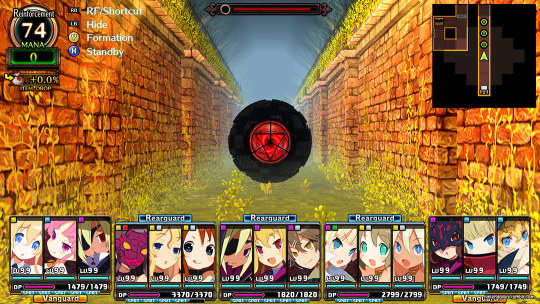

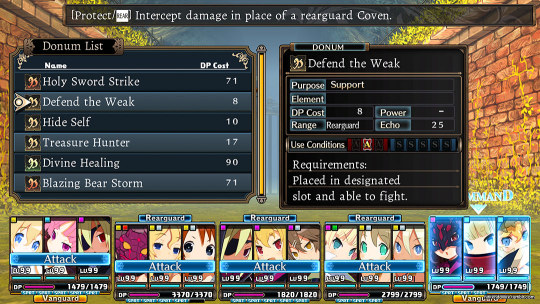

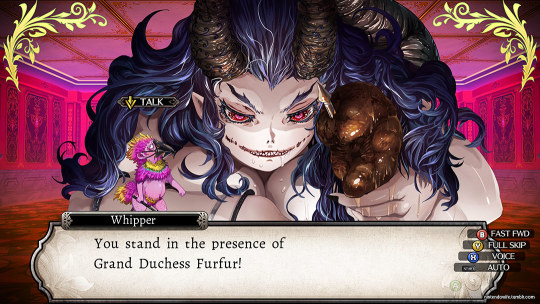


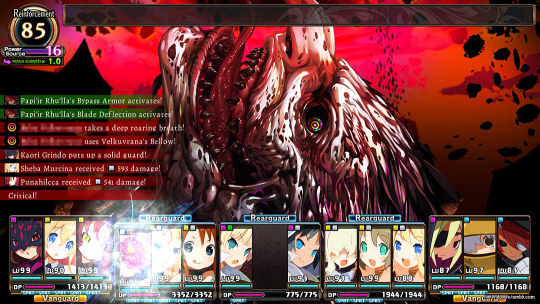

I recently finished Labyrinth of Refrain: Coven of Dusk on PC. The main story playthrough took me 100 hours and then I proceeded to the post-game dungeon to get the true ending, adding up to a total playtime of 132 hours.
At first my feelings towards the game were ambiguous. I very much liked the visual style but the dialogue and story seemed boring. Also the game systems were too complicated for their own good. I appreciated the game tried to come up with some new unconventional systems but they were pretty difficult to understand. The terms the game uses were unfamiliar and for a long time I didn't know how the covens and such work.
The turn-based dungeon crawling RPG gameplay didn't completely convince me at first. Battles were boring as in the beginning you don't get active skills to use, so it was just whacking monsters with normal attacks. Characters gain passive skills but all active skills are tied to the different covens you assign the characters to. As you advance in the game you start getting better covens with more skills and battles get more interesting.
There are underlying combat mechanics though, like "critical gore" hits that destroy a limb of either the enemy or your own team members, leading to lowered max HP and decreased attack or defence. In case the head gets destroyed, it's one-hit KO for the character. This added a surprising amount of tension to battles.
Advancing in the game wasn't always clear as there were all kinds of roadblocks preventing smooth progress which was a bit frustrating. For example to progress in a dungeon you needed to complete some kind of an arbitrary task or event, then return to base where you needed to report. Only after that you either gained a new ability to progress or another main story event triggered somewhere in the dungeon.
Slowly the game started unfolding its brilliance. The game mechanics clicked with me and I understood how to utilize covens, formations, etc. to my advantage. The story got a lot more interesting too. The first-person dungeon crawling and mapping of areas felt satisfying to me right from the beginning. Dungeons became visually more enticing and the boss fights and story events made me want to push further to see what else is on offer.
I have to say Labyrinth of Refrain is not a feel-good game despite what you may think based on the cute looking characters. I actually felt uncomfortable about some events and dialogue in the game. There's verbal and physical abuse, unconsented sex and cruel treatment of others. Some of the monster designs are downright grotesque and repulsive.
What the game excels in is character customization. You can create dozens of characters into your roster. You select a class, gender and you have 4 different character portraits to choose from. You choose a voice, personality, stance, stat growth type and lucky number. You can name the characters and even get to input a flavor text for each of your "puppets".
I had lots of fun getting creative, coming up with all kinds of silly or fancy names and flavor text describing their backstory. For example I had a chubby female mage Plyyshi de Devaan who was the cousin of my dancer character Velour van Schohva. One of my masked female mages I named Naamio Campbell (naamio means mask in Finnish) as a word play of Naomi Campbell, the former supermodel.
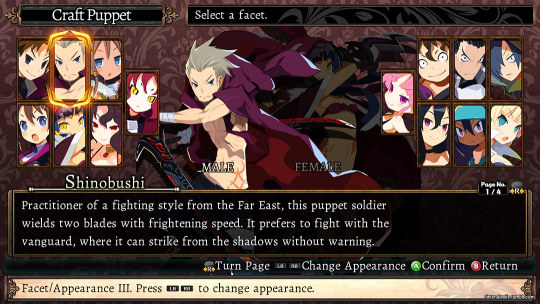

In addition to characters' normal portrait illustrations you get to see fun chibi versions of them during battle when they occasionally do a so-called resonance attack.

You can equip your characters freely (no class restrictions on weapons/gear). Your characters gain stats and passive skills when they level up and there's the possibility to do a "soul transfer" to move existing characters' growth to a new puppet with another class. This allows you to transfer class-specific skills to other classes and create truly powerful and efficient characters. Soul transfer is key mechanic to tackling some of the post-game content.
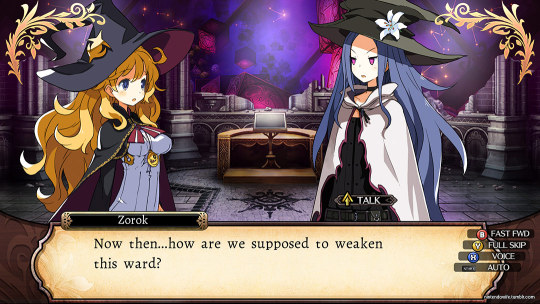
In the end I truly enjoyed the game despite my indifferent feel towards the early-game content. I grew attached to the characters. Music was great especially in boss encounters and voice acting in Japanese was very good. The mechanics allowed for building an efficient team and I saw the pros of the skill system I was initially disappointed with. The battles offered a good challenge, even so much that before entering the post-game I decided to lower the difficulty to avoid grinding. I was a fan of the visuals and I especially adored one key character's design that appears in the post-game.
I've already added the sequel, Labyrinth of Galleria, to my wishlist.
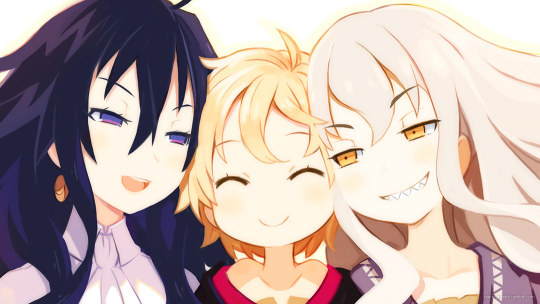
3 notes
·
View notes
Photo

‘FIRE EMBLEM ENGAGE’ - REVIEW ROUNDUP!
What with all the excitement of the Fell Dragon rising this Friday for the launch of Nintendo’s Fire Emblem Engage, we know there’s some of you guys and girls that prefer to wait for reviews before making that pre-order commitment! As always, we get it and we’ve got it. “It” being reviews of course... Right this way:
IGN - 9/10
“It’s no small feat that Fire Emblem Engage is able to tell a simple-but-fun story that celebrates the vast history of its series in a way that doesn’t rely on prior knowledge of that legacy.”
Read the full review here.
Eurogamer - Recommended
“This is a fine RPG that further innovates an already rich combat system, and while long-term fans will get more from this, newcomers might be inspired to check out the rich history of this strategy series.”
Read the full review here.
GameInformer - 9/10
“It’s one of the most gripping games I’ve played on Switch and, ultimately, one I struggled to peel myself away from. If Three Houses was an experiment with where Fire Emblem’s social mechanics can go, then Engage is doing the same for the series’ evolving combat, and excelling just as much, too.”
Read the full review here.
NintendoLife - 9/10
“If you're coming to this one looking for the depth of content in the downtime between battles that Three Houses provided, you're going to be disappointed, simple as that. But if you're here for the combat — if all you really want from Fire Emblem is to test your mettle against super smart adversaries in some of the slickest and most satisfying turn-based combat around — Intelligent Systems has got you well and truly covered. We doubt you'll play many better tactical RPGs in 2023 than this one.”
Read the full review here.
GodIsAGeek - 9.5/10
“Fire Emblem Engage is a masterpiece of tactical gameplay design. Varied enemies, classes, combat systems, and more make it feel like the best the genre has to offer. An interesting story runs through everything, and there’s even multiplayer options to keep you coming back, should you somehow tire of the exquisite combat.”
Read the full review here.
Destructoid - 9/10
“When Fire Emblem Engage was first announced I was wary of the visual style, but it grew on me once I saw it in action. The strategic bits are smooth, the customization element is deep, and I’m a sucker for the tasteful fan service that we’re getting with the appearance of past franchise heroes.”
Read the full review here.
We told you we had “it”.
Last chance to pre-order with us here at The Game Collection!
-Jack
#fire emblem engage#review roundup#nintendo switch#nintendo news#TGC#thegamecollection#ign#nintendolife#godisageek#eurogamer#gaming#Game Informer#switch news#fire emblem#pre-order#review scores#news#video games#gamers of tumblr#blogs for gamers
6 notes
·
View notes